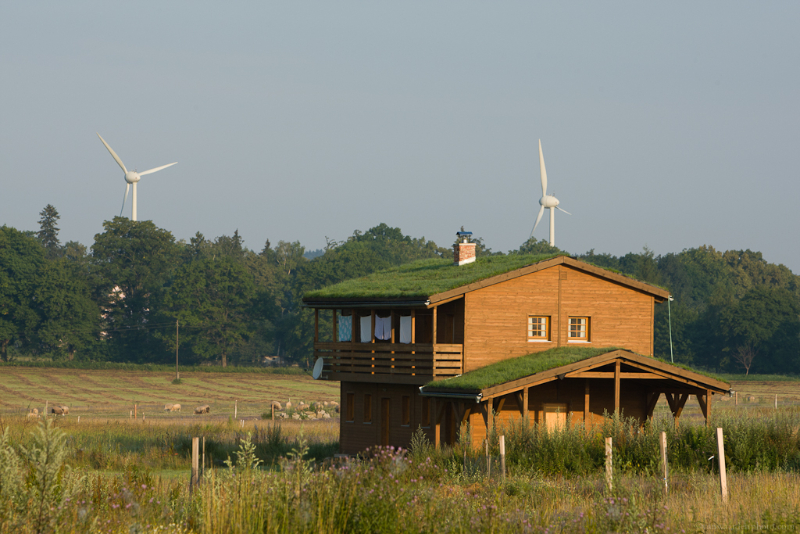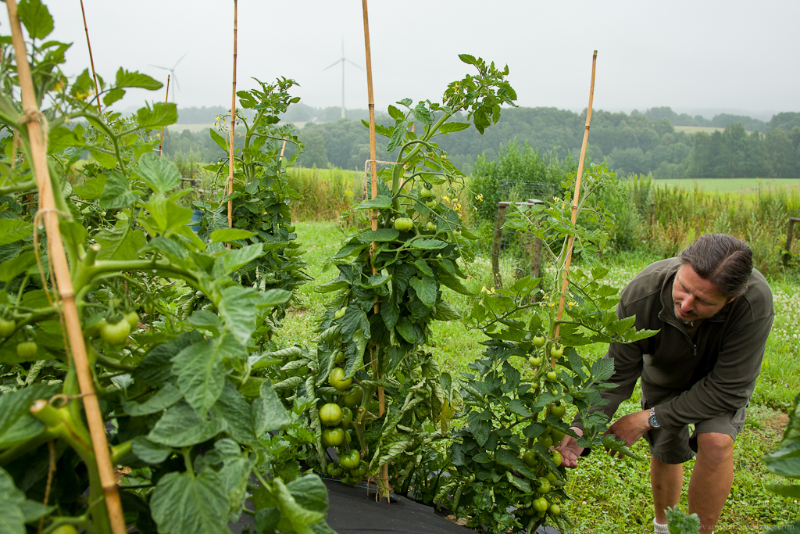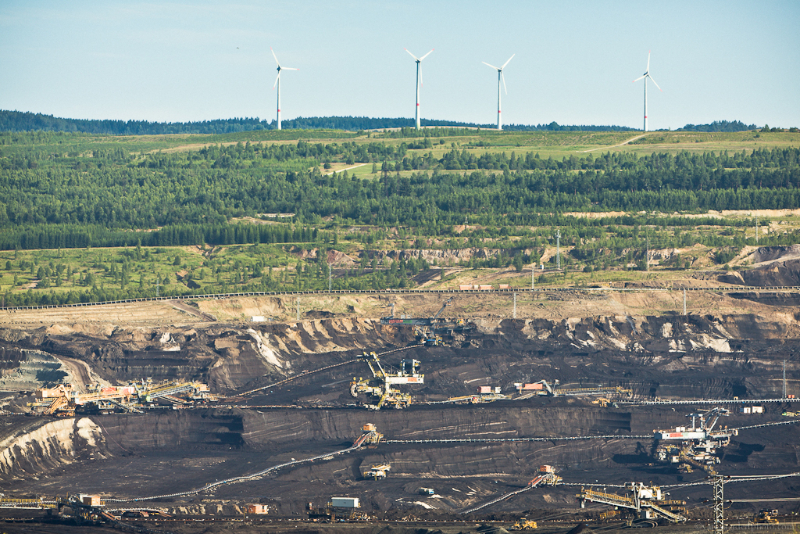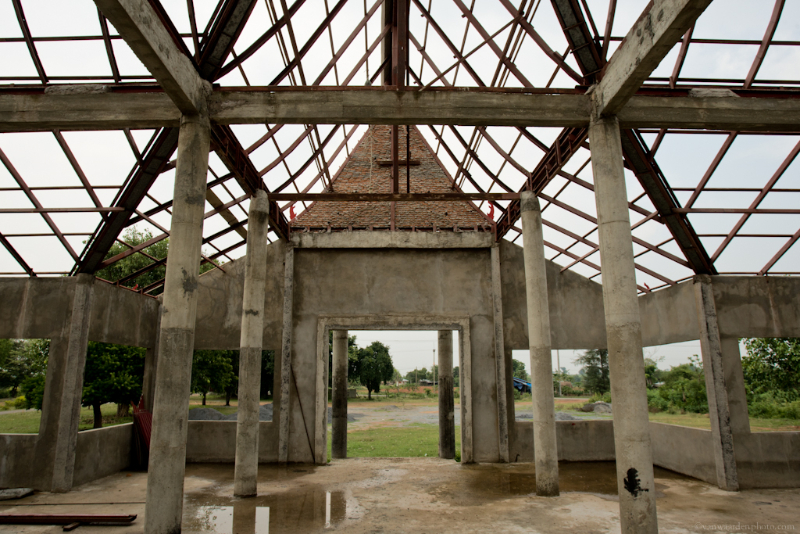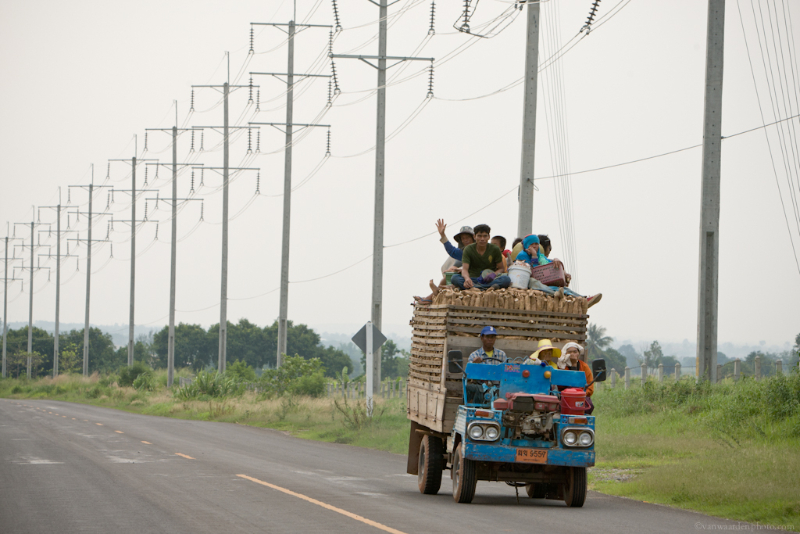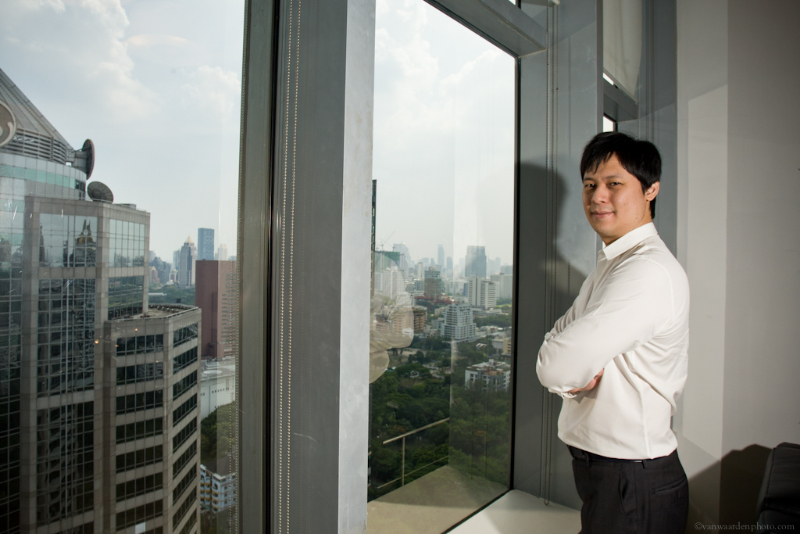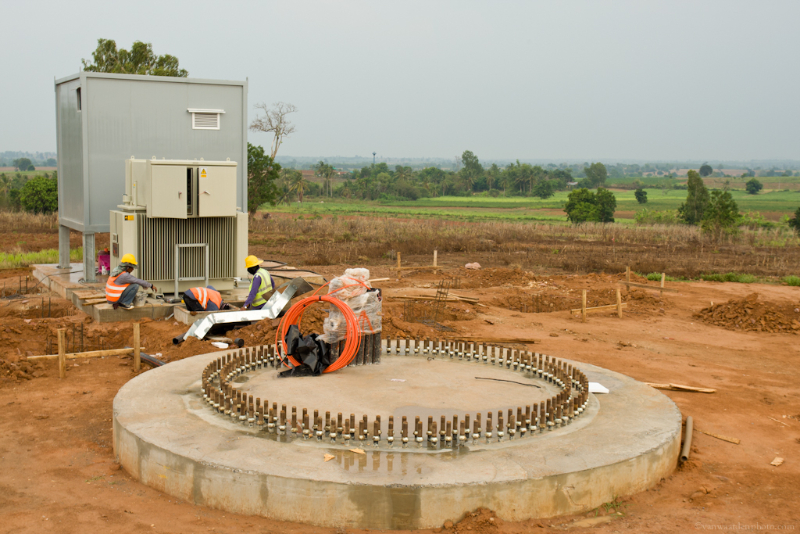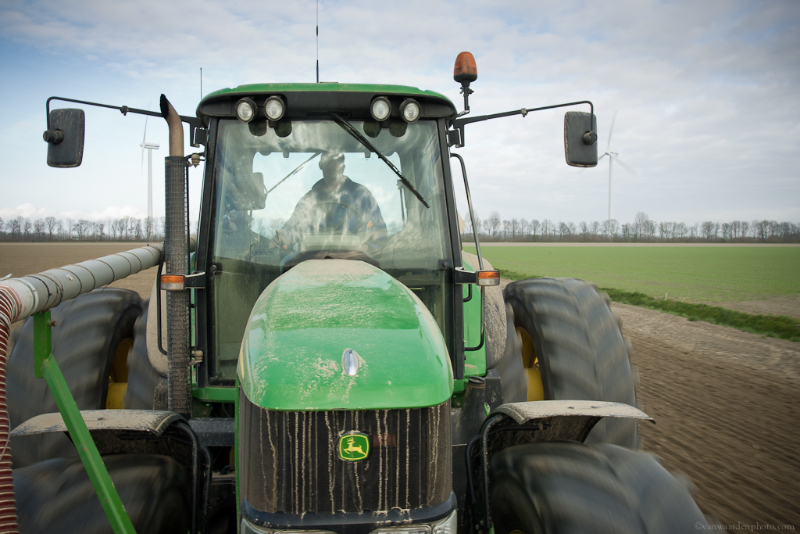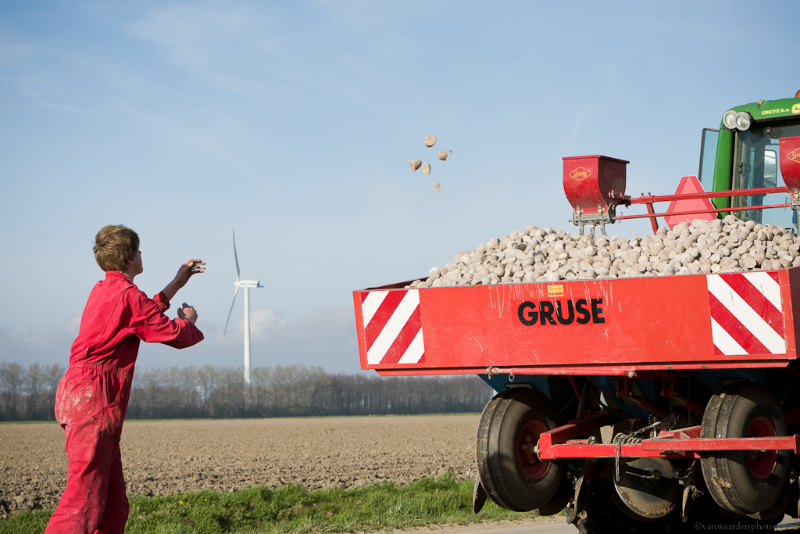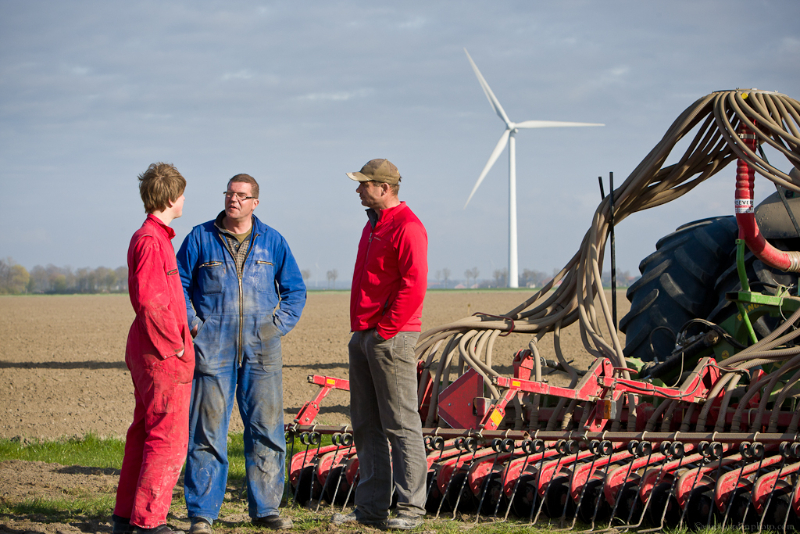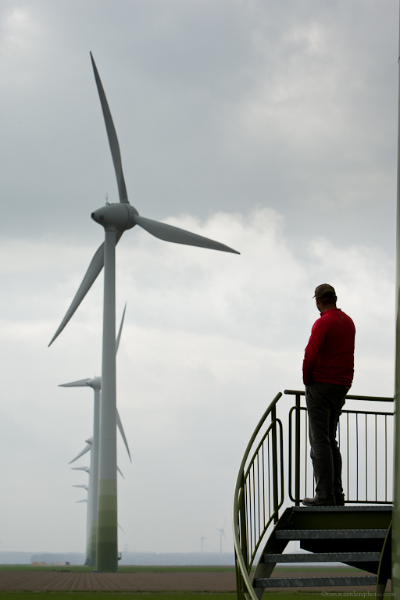Spring is finally approaching, and that means just one more month to submit your entry to the Global Wind Day photo competition which closes on 5 May, and potentially win a €1,000 Amazon voucher! In the latest of the ‘wind energy stories’ series, photographer Robert van Waarden tells and shows the story of Krzysztof Pietrzak, a Polish ornithologist employed at a wind farm near Gościno, Poland.
The shadows are still long on the freshly fallen snow when Krzysztof Pietrzak starts out on his daily walk. Spring is in the air here in Gościno, Poland, and during the next few hours Krzysztof will walk 10 km with his dog Ciapa (‘clumsy’). Krzysztof is an ornithologist. Everyday he follows the same route, monitoring the bird and bat activity at the wind farm near Gościno. His primary job is to determine the mortality rates of birds and bats in relation to the turbines. And Ciapa, despite her playful and clumsy character, is a trained professional particularly good at finding bats.
Inevitably one of the first questions Krzysztof receives is; how many birds or bats have these turbines killed?
Photographer Robert van Waarden reports on wind energy in rural Czech Republic, as part of the Global Wind Day “wind energy stories” series.
“I tried to change things on a national political level but I had to recognise that it wasn’t possible,” says Petr Pavek, leaning against his straw bale house. He gazes out on his property over-looking the little town of Jindřichovice pod Smrkem in the Czech Republic. In the fields below organic vegetables grow, and cows for organic beef graze on the pasture. A totem pole stands next to his pond and a green roofed garage melds into the landscape. In the village a dog barks, and a lone car rumbles along the road.
Jindřichovice seems like any other quiet town in rural Czech Republic. But from where Pavek stands, the view is drastically different. In the distance, two wind turbines lazily turn in the evening breeze. Beyond, eight sustainable houses stand in a row. Powered by renewable energy, these green-roofed houses were built to attract young people back to the community. When they were completed, over 100 applications poured in. The community selected eight families and sold the houses at cost price.
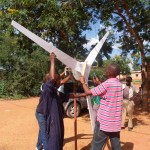
Wind energy in the Tanzanian village of Songambele
By Fran Witt Renewable World
Did you know that 1.3 billion people in the world have no electricity? That’s the same as the entire population of the EU (500 million) twice over and the US (300 million) combined.
While wind energy in Europe is providing energy solutions on a large scale, in some of the world’s poorest zones the opposite is true – small, local wind energy micro-businesses can provide a vital source of affordable electricity for lighting, water pumping, access to information, agriculture and refrigeration of food and medicines
We at international charity Renewable World are working on setting up small scale renewable energy micro-businesses to change the fortunes of some of the world’s poorest communities.
In the Tanzanian village of Songambele, Renewable World has installed a wind-solar hybrid project in which a 1kW wind turbine is helping to power an Information Centre housing books, mobile phone charging points and internet access.
Today, photographer and wind power enthusiast Robert van Waarden reports on wind energy in Thailand, as part of the Global Wind Day “wind energy stories” series.
“A wind turbine represents modernity. So, they want this in their community. Hey we are modern, they say. This is latest technology and we are independent, from Burmese gas and from imported oil. Our energy is produced here with our own resource – that is wind – zero emissions and we are proud of it,” Nick Suppipat said.
Nick Suppipat and the company Wind Enterprise Holdings have recently completed the largest wind farm ever in Thailand. The 207 MW wind park is built in the Nakhon Ratchasima district. It is a significant step for the fledging wind industry in the Thailand and an example of how sustainable development can be a win-win.
Seven years ago, oil prices were skyrocketing and Thailand was in the midst of a financial crisis. Nick, an investor since he was 17, was convinced that renewable energy would be the next big thing and figured that wind was going to take the biggest share of that. For him, the business case made sense and he jumped in.
The Global Wind Day “wind energy stories” series continues as photographer and wind power enthusiast Robert van Waarden travels to Flevoland to meet Stephan and Ralph de Clerck who successfully combine wind power and farming.
Cycling along the country roads of Flevoland, you can’t help but notice the wind. If you’re lucky, it is behind you, if it isn’t… well, good luck. It is no wonder that wind turbines haphazardly dot the landscape. They fit. This is the Netherlands, a country where wooden windmills have dotted the landscape for hundreds of years. Now instead of pumping water, modern wind turbines are now powering thousands of homes.
Stephan de Clerck and his brother Ralph live within a few kilometres of each other in Flevoland and they are no strangers to the wind. They have been harvesting wind energy for 11 years. In the beginning they were looking for ways to diversify their farms and incomes. They love how wind energy perfectly complements their other crops of potatoes, onions, and sugar beets. Once installed, the windmills turn steadily in the background, while the day-to-day life of a farmer continues. For them, wind energy is a valuable crop, and one that gets better the stormier the weather.











 Comments
Comments
